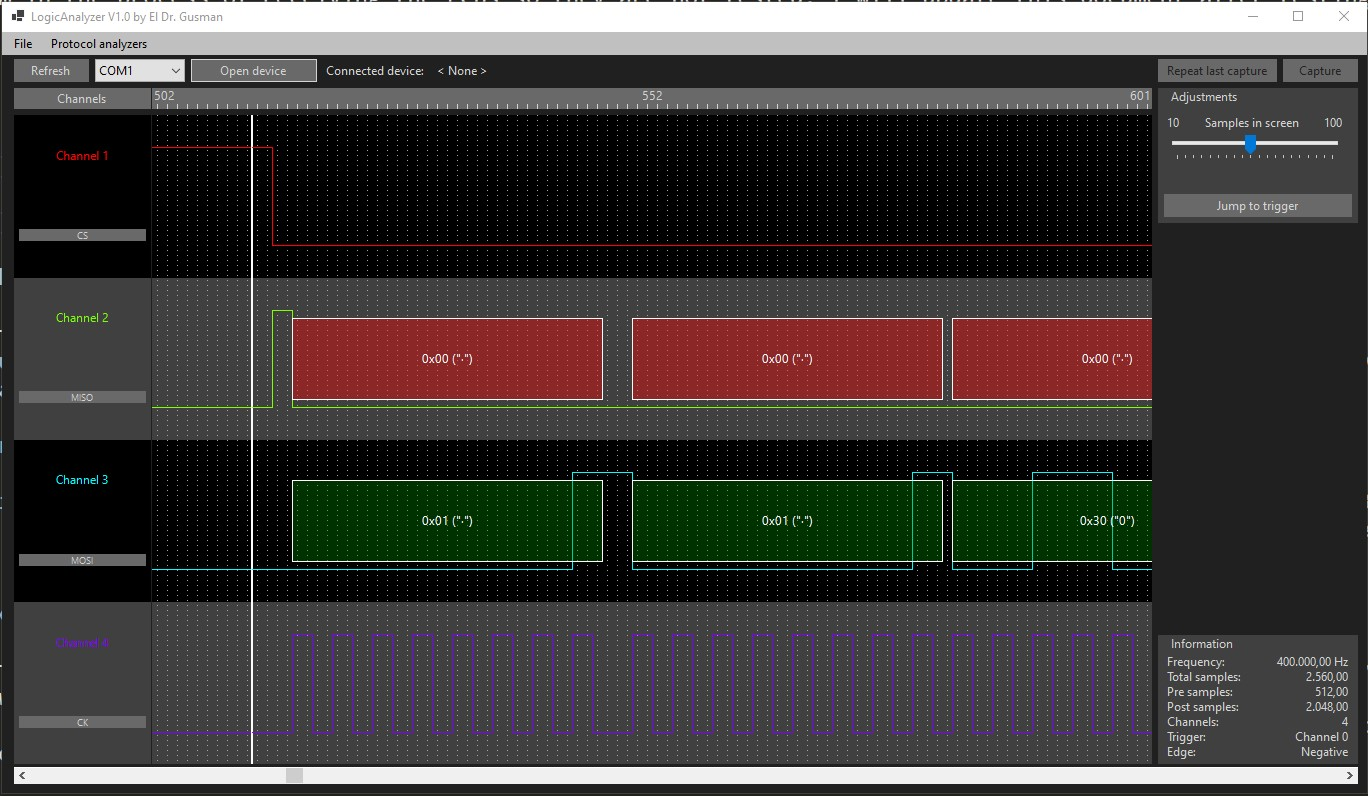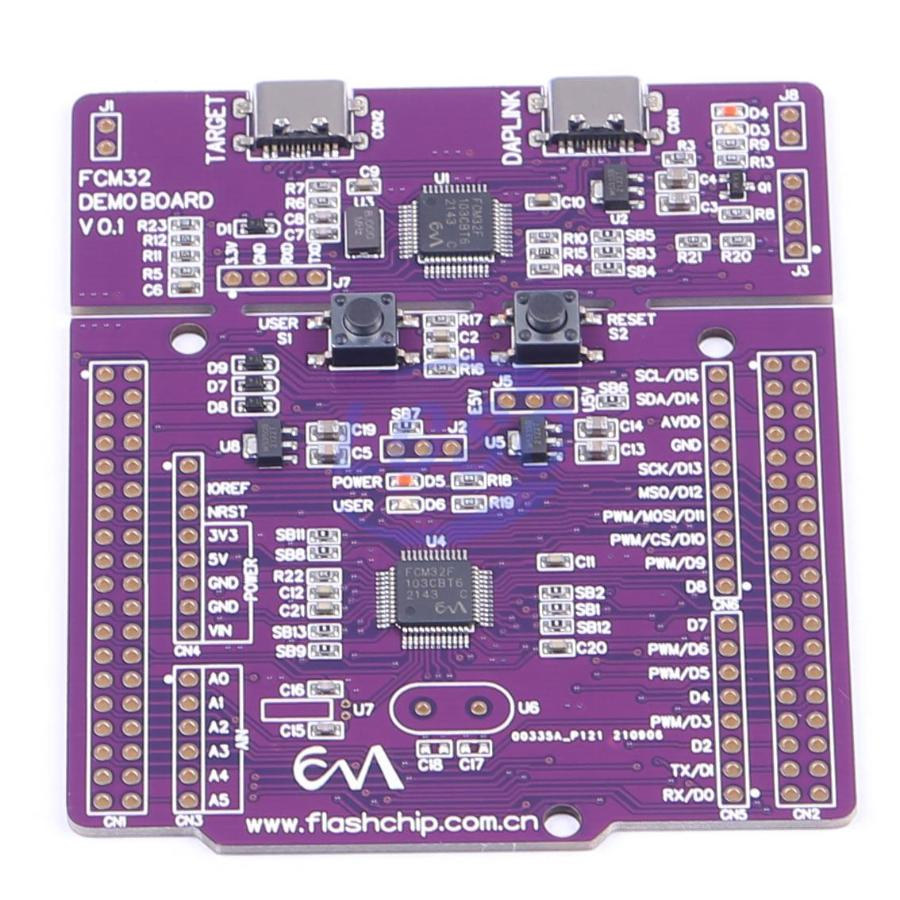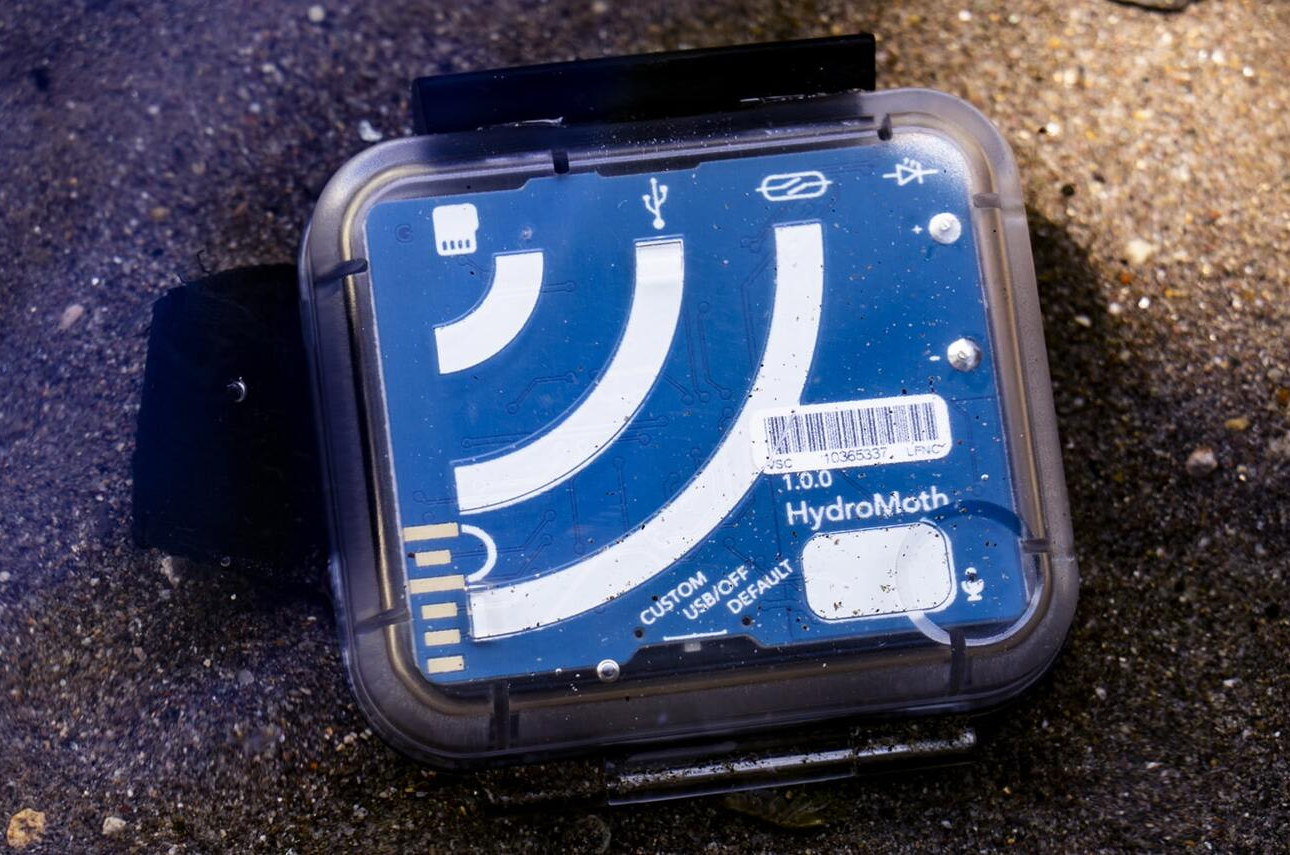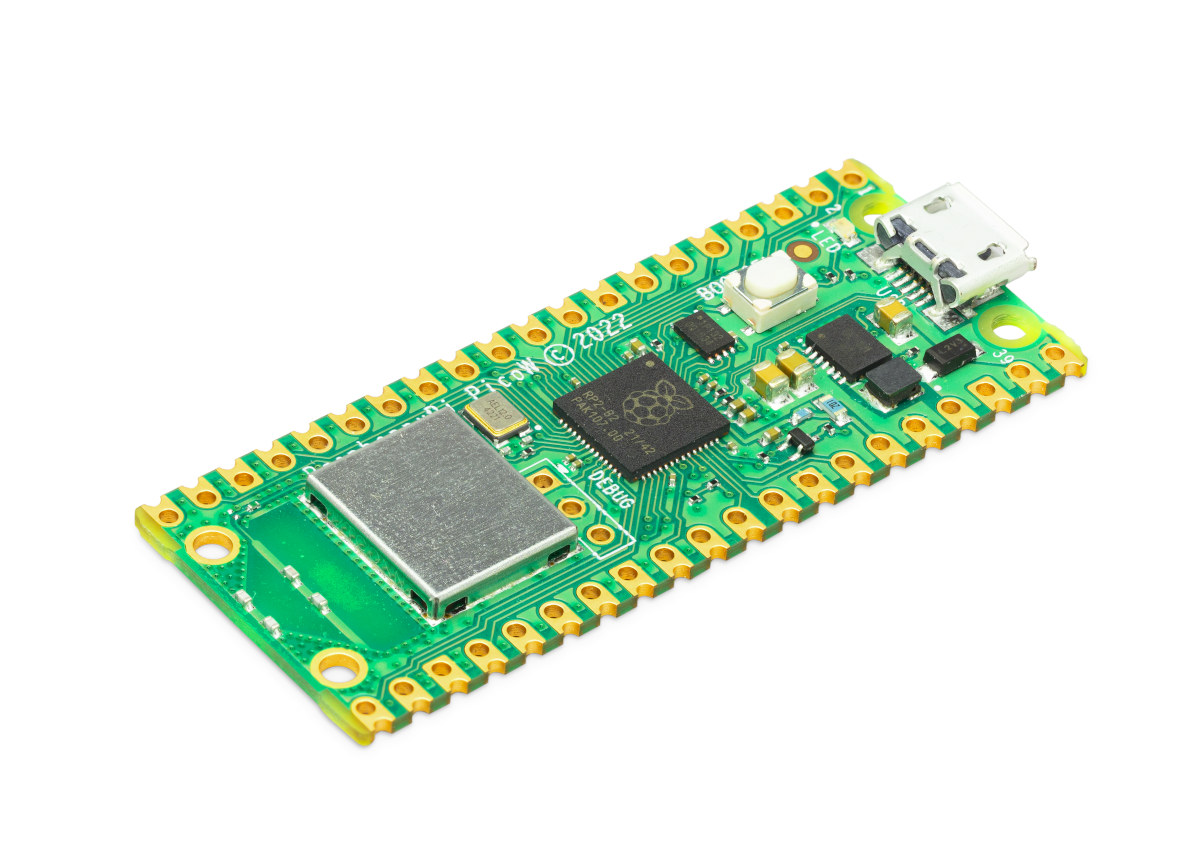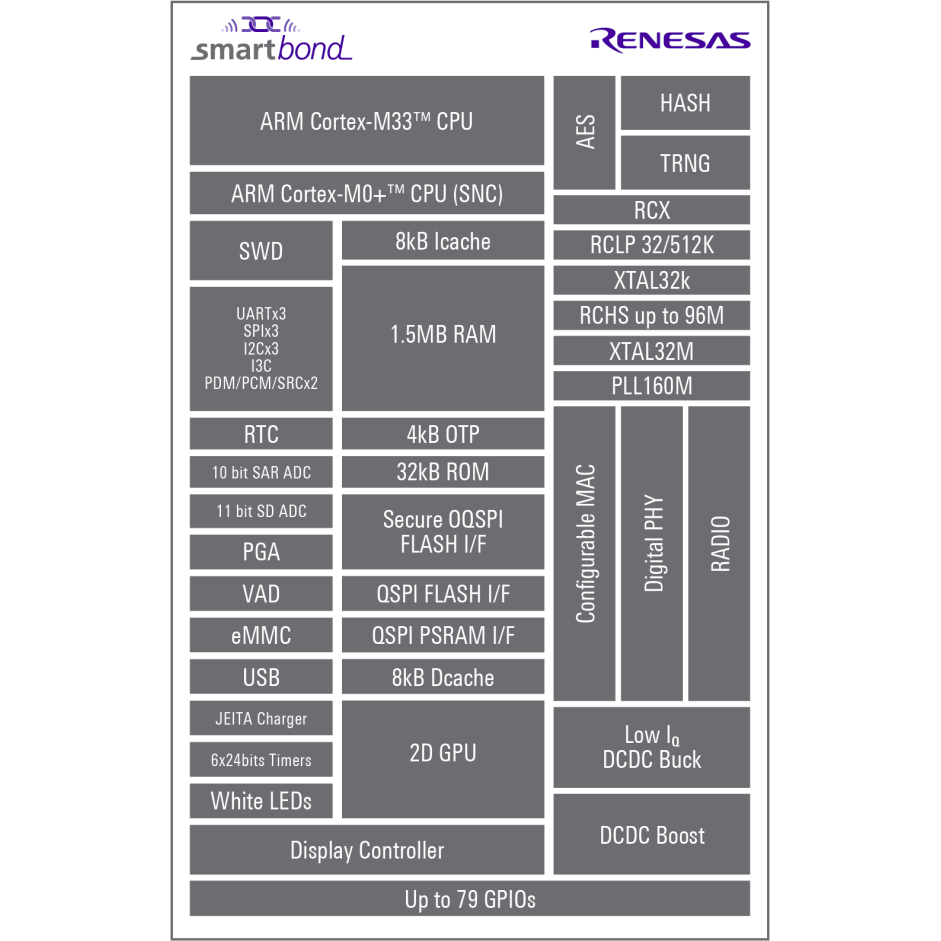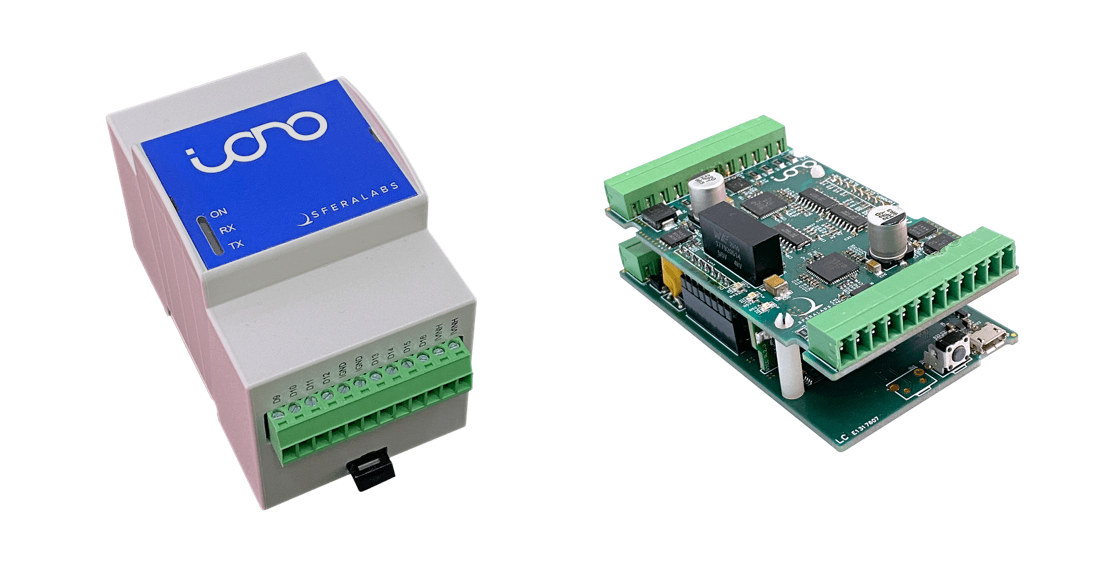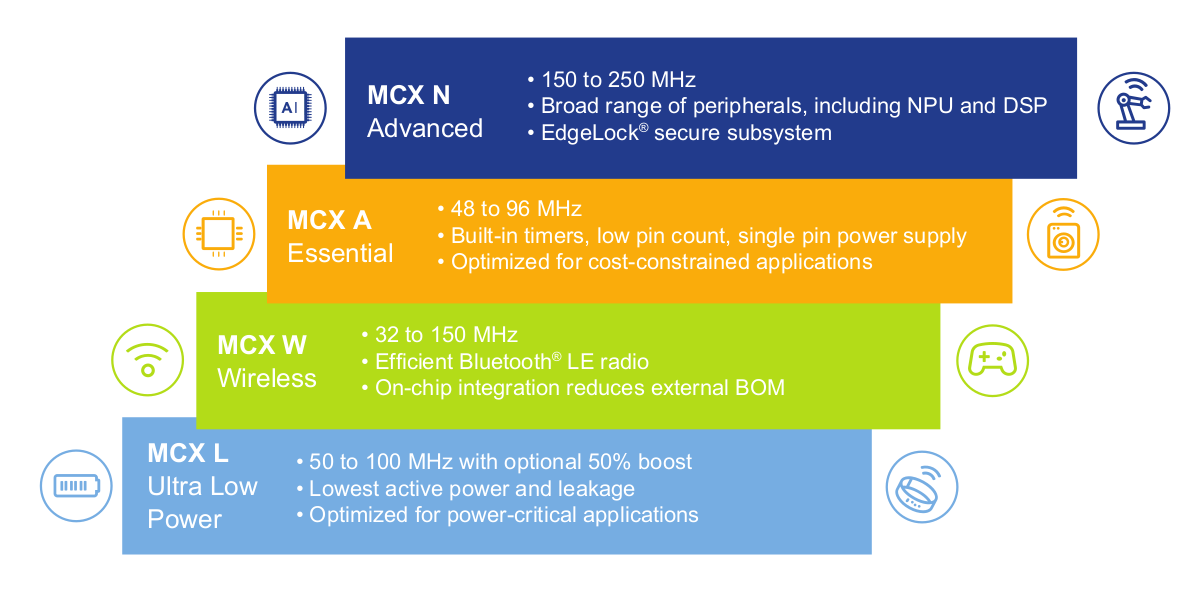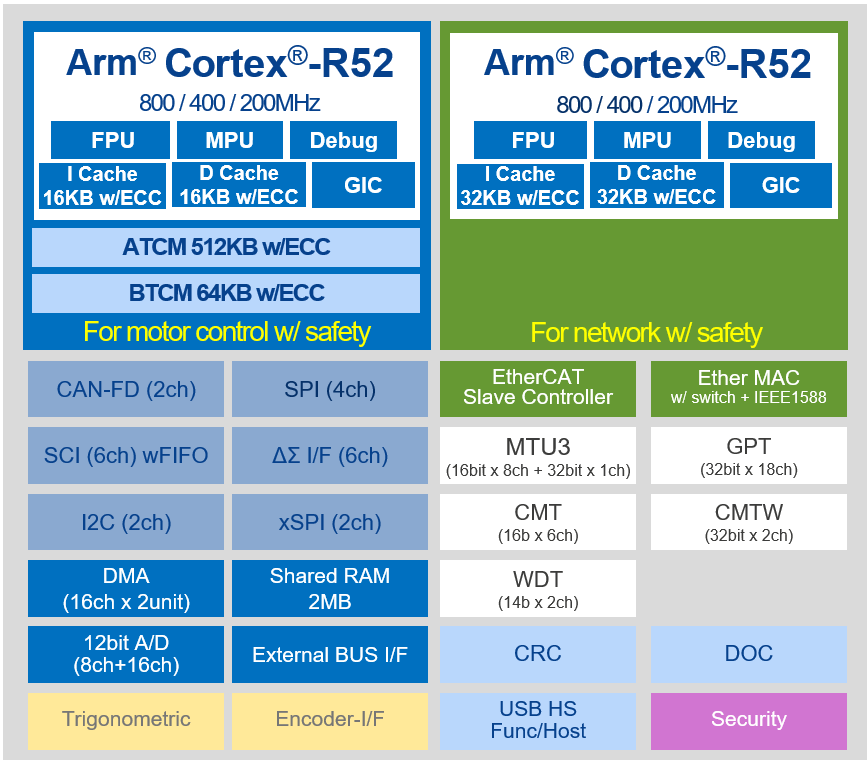MCU boards, including the $1.5 BluePill board, have been used as cheap logic analyzers for years, notably with Sigrok open-source software. So it should come as no surprise the $4 Raspberry Pi Pico board can also be used as a logic analyzer, with one developer claiming it can deliver 100 Msps, or the performance obtained with a 1.6 GHz CPU, thanks to the PIOs from the Raspberry Pi RP2040. Hackaday reported about a Sigrok driver for the Pico last March, but the topic was brought to our attention via a post on Hackster.io about an open-source Windows program developed from scratch to transform the Raspberry Pi Pico board into a logic analyzer capable of 100 Msps. Agustín Gimenez Bernad (aka gusmanb)’s LogicAnalyzer program offers up to 24 digital channels, pre, and post-trigger sampling, edge trigger and pattern trigger up to 16 bits. It can work with the Raspberry Pi Pico […]
Flashchip FCM32 is yet another alternative to STM32 microcontroller
Once upon a time, people tried to avoid STM32 fakes and clones, but in a world where companies are allegedly purchasing washing machines to extract a few unavailable components, people have started to look for alternatives, and last week I wrote about the Geehy APM32 family of STM32 clones. But I had never heard about Flashchip Microelectronics FCM32 microcontrollers, and they are not that easy to find in search engines, so they must be relatively new. The company appears to make both FCM32F clones and FCM32H derivatives with no direct equivalent STM32 part numbers, a higher clock frequency, and faster flash. For example, the FCMF030F4P6 will match the specifications of STMF030F4P6 as far as I can tell. The good news is that the datasheet is available in both Chinese and English. The FCM32H030C8T6 appears to be a higher performance version of STM32F030C8T8 / FCM32F030C8T8 with a 100 MHz frequency, and […]
Silabs EFM32-based HydroMoth enables underwater acoustic data recordings
Open Acoustic Devices’ HydroMoth is the underwater equivalent of the AudioMoth full-spectrum acoustic device that records audio samples mostly to monitor wildlife. Still based on a Silicon Labs EFM32 Wonder Gecko MCU, the HydroMoth is firmware-compatible with AudioMoth, enables audio recording at up to 60 meters deep, and has been tested to last two months at a depth of 30m using three AA batteries. HydroMoth key features and specifications: Wireless microcontroller – Silicon Labs EFM32 Wonder Gecko Cortex-M4F MCU @ 48MHz with 256kB Flash, 32kB RAM Storage – MicroSD card slot to store audio data Audio capture Onboard analog MEMS microphone acting as contact hydrophone Analog preamplifier with adjustable gain Uncompressed WAV from 8k to 384k samples per second USB – Micro USB Type-B port for configuration and reprogramming of the flash Misc Onboard RTC to track time in UTC timezone Improved 32.768 kHz MEMS oscillator to reduce clock drift […]
Raspberry Pi Pico W – A $6 Raspberry Pi Pico board with WiFi 4
I was expecting the next official Raspberry Pi board to be either an update of Raspberry Pico with WiFi and Bluetooth or with a machine learning accelerator and the new $6 Raspberry Pi Pico W delivers that wish through the addition of 2.4GHz WiFi 4. Having said that, I was actually expecting a competitor to ESP8266 or ESP32 with a new Raspberry Pi wireless microcontroller, but it did quite happen that way as the Raspberry Pi Pico W features the same Raspberry Pi RP2040 dual-core Cortex-M0+ microcontroller found in Raspberry Pi Pico board coupled with an Infineon CYW43439 chip that’s supposed to support both 2.4 GHz WiFi 4 and Bluetooth LE 5.2. Bluetooth is not enabled right now, but may be at a later stage. Raspberry Pi Pico W specifications: MCU – Raspberry Pi RP2040 dual-core Cortex-M0+ microcontroller @ 133 MHz with 264KB SRAM Storage – 2MB QSPI flash Connectivity […]
Renesas SmartBond DA1470x Bluetooth 5.2 LE SoC features a 2D GPU
I would not usually ask myself “is there a GPU?” in a Bluetooth LE SoC, but that’s exactly what Renesas SmartBond DA1470x Bluetooth 5.2 LE microcontroller offers with a 2D GPU used to accelerate the rendering of user interfaces in wearables, healthcare devices, home appliances with displays, industrial automation and security systems, as well as consoles in e-bikes and gaming equipment. The DA1470x also comes with a Cortex-M33 application core, a Cortex-M0+ sensor node controller, 1.5MB SRAM, and an ultra-low-power hardware VAD for always-on audio processing, as well as various peripherals. Specifications: CPU cores Arm Cortex-M33 core @ up to 160 MHz for the application Arm Cortex-M0+ core acting as a sensor node controller (SNC) GPU – 2D GPU for advanced graphics processing Memory – 1.5MB SRAM Storage 4 kB OTG, 32KB ROM on-chip Decrypt-on-the-fly Octa/Quad SPI flash interface Dedicated QSPI PSRAM and QSPI flash interfaces eMMC interface supporting up […]
Iono RP D16 industrial IO module features Raspberry Pi RP2040 MCU
Sfera Labs has launched another Raspberry Pi RP2040-based hardware platform with the Iono RP D16 industrial IO module following the Exo Sense RP multi-sensor module we covered last month. The Iono RP D16 module provides sixteen digital 24V I/O lines, an RS-485 serial interface, a wide range 12-28V power supply input, and its DIN-rail case enables installation in electrical cabinets and automation control systems. Iono RP D16 specifications: MCU – Raspberry Pi RP2040 dual-core Arm Cortex-M0+ microcontroller @ 133MHz with 264kB on-chip SRAM Storage – 16MB SPI flash Inputs/Outputs via terminal blocks Up to 16x 24V 640mA outputs driven by high-side switches that can also be configured as push-pull drivers for high-speed switching (via MAX14912 chips) Up to 16x 24V IEC 61131-2 compliant current-sinking inputs (via MAX22190 chips) 4x TTL level I/Os (1-Wire, I2C, Wiegand support) Serial – RS-485 interface to the RP2040 serial lines via terminal block with electrostatic […]
NXP unveils MCX general-purpose Arm MCU family with 30x faster machine learning performance
NXP has announced a new MCX general-purpose Arm Cortex-M MCU family designed for advanced industrial and IoT edge computing and integrating an NXP neural processing unit (NPU) capable of delivering over 30 times higher performance than running the AI inference tasks on an Arm Cortex-M33 core alone. The new MCX portfolio builds upon the earlier NXP LPC and Kinetis microcontroller families, but does not replace these, and aims to improve machine learning performance and security for a variety of applications including machine learning, wireless, voice, motor control, analog, and more. The new MCX family will be available in four series: MCX N Advanced series Designed for secure, intelligent applications 150 MHz to 250 MHz Neural processing unit (NPU) and DSP for real-time inference EdgeLock Secure Subsystem MCX A Essential series Optimized to provide critical functionality for applications such as motor control 48 MHz to 96 MHz Built-in timers, low pin […]
Renesas RZ/T2M dual Arm Cortex-R52 MPU delivers high-precision servo motor control
Built around two Arm Cortex-R52 cores clocked at up to 800 MHz, Renesas RZ/T2M microprocessor units (MPUs) target real-time, high-precision motor control applications such as AC servo drives and industrial robots. The RZ/T2M microprocessor also supports Ethernet with TSN and functional safety, and has been designed in such a way to reduce the number of external components in order to both decrease the BoM costs and the product size. Renesas RZ/T2M key features and specifications: CPU – Up to 2x Arm Cortex-R52 cores clocked at up to 800MHz, one core for motor control, and the other for networking Trigonometric function accelerator Memory – Tightly coupled memory 576KB with ECC, 2MB RAM with ECC Storage I/F – Octa/Quad SPI support Networking 3-port Gigabit Ethernet switch with TSN Industrial Ethernet: EtherCAT, PROFINET RT/IRT, EtherNet/IP, etc… Motor control 2-channel encoder interface with support for A-format, EnDat, BiSS, HIPERFACE DSL, Tamagawa Functional safety support […]


